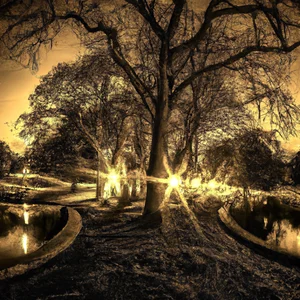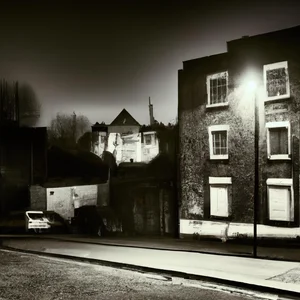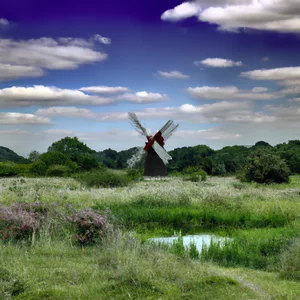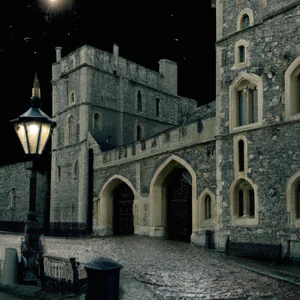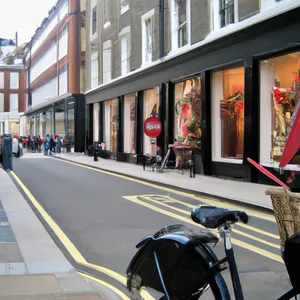Book your experience
Greenwich: a journey back in time to the royal borough on the Thames
Greenwich, guys! It’s like stepping back in time to this super charming corner along the Thames. I don’t know if you’ve ever been there, but it’s one of those places that really has a unique atmosphere, almost magical, so to speak.
So, imagine walking through the cobbled streets, while the wind ruffles your hair. Here, the past and present mix like a good cocktail, and there are plenty of things to see. For example, the famous Greenwich Observatory: that’s where time took shape, right? It’s as if the zero meridian were saying “Hey, this is where it all begins!” And I, the first time I went, I felt a bit like an astronaut, in a way.
And then there’s the park, oh, that park! Perfect for a walk or even just to sit and sunbathe (if it’s not raining, of course). Maybe bring a sandwich, because, trust me, a picnic there is the best.
But the thing that struck me most was the history that can be felt in every corner. You know, there are old palaces that tell stories of kings and queens, and I think it’s really fascinating to imagine what life was like here centuries ago. A bit like when you watch a costume film and get lost in the elegant dresses and dances.
In short, if you happen to pass through these parts, don’t miss the opportunity. It’s like time travel, but without the risk of ending up among the dinosaurs, so to speak. Maybe I’m not 100% sure, but I think it’s really worth it!
Discover the Royal Observatory: the heart of Greenwich
A journey through time between stars and meridians
I still remember the feeling of wonder as I climbed the hill in Greenwich Park, with the sun filtering through the leaves and the crisp air enveloping me. Arriving at the Royal Observatory, I felt that time itself seemed to stop. Here, in the place where the lines of longitude were drawn and where Greenwich Mean Time came to life, I had an experience that goes beyond a simple tourist visit; it was a real immersion in the history of humanity and its scientific achievements.
Practical information
The Royal Observatory, opened in 1675, is easily accessible by tube (‘Greenwich’ stop) and offers a series of interactive exhibitions that tell the story of astronomy and navigation. Opening hours vary depending on the season, but generally the museum is open every day from 10:00 to 17:00. Tickets can be purchased online to avoid long queues at the entrance. I recommend you check the official website Royal Museums Greenwich for any special events or temporary exhibitions.
An insider tip
A little-known trick is to visit the Greenwich meridian at dawn. Not only will you avoid the crowds, but you’ll also have the opportunity to see London’s landscape illuminated by the rising sun, a perfect time to take photographs that tell stories. Plus, listen to tales from local guides, who often share fascinating anecdotes about the lives of spaceships and scientists of the past.
Cultural impact
The Royal Observatory is not just a museum; it is a symbol of how science has shaped our understanding of the world. The creation of Greenwich Mean Time had a lasting impact on maritime navigation and the organization of time globally. This place has helped define the coordinates of our planet, uniting cultures and countries through a shared understanding of time.
Sustainable tourism practices
When visiting the Royal Observatory, consider using sustainable transportation. The site promotes green practices, such as the use of bicycles and public transport, to reduce environmental impact. Additionally, part of the ticket proceeds are reinvested in conservation and environmental education programs.
An experience not to be missed
Don’t miss the opportunity to observe the sky through one of the historic telescopes or take part in one of the astronomical observation evenings organized by the museum. These experiences will not only bring you closer to the stars, but will also give you a new perspective on our place in the universe.
Myths to dispel
A common misconception is that the Greenwich meridian is just an abstract line; in reality, it represents a real human achievement. It is essential to understand that this line allowed the standardization of time and revolutionized the way we live and communicate.
Final reflection
As you leave the Royal Observatory, I invite you to reflect on how time means something different to each of us. What is your personal meridian? What events, experiences or people have marked your path? On this trip to Greenwich, you will not only explore the heart of science, but you can also discover a piece of your own history.
Sailing the Thames: unforgettable boat tours
A Personal River Experience
I vividly remember the first time I sailed the Thames. It was a fresh spring morning and the sun reflected on the waves, creating a play of light that seemed to dance. On board a boat that accompanied the historic boats, I was able to admire the panorama of London and Greenwich from a unique perspective. The sound of flowing water and the singing of river birds made that experience an indelible memory. Sailing the Thames isn’t just a way to see the city; it is a journey that tells stories, legends and historical connections.
Practical and Updated Information
Today, several operators offer boat tours along the Thames, departing from Greenwich. City Cruises and Thames Clippers are among the most popular options, providing journeys ranging from short scenic cruises to longer tours that include stops at points of interest. Tickets can be booked online or directly at the pier. Be sure to check the hours, as they vary depending on the season. A great resource is the official [Visit Greenwich] website (https://www.visitgreenwich.org.uk), where you can find up-to-date information on tours and local events.
An Unconventional Advice
If you want a more intimate experience, look into booking a private tour or charter. Some operators offer customized packages that allow you to explore lesser-known corners of the river and enjoy a picnic on board – a perfect option for families or those looking for a romantic getaway. Be sure to bring a camera with you, because every corner of the river is a work of art!
Cultural and Historical Impact
Sailing the Thames is not just a tourist activity; it is a way to understand London’s maritime history and its development as a trading power. The waterway has seen the passage of merchant ships, historic battles and celebrations, making it a true witness of time. The presence of iconic monuments such as the Tower of London and the Millennium Bridge along the route testifies to the central role of this river in British culture.
Sustainable Tourism Practices
Many tour operators are adopting more sustainable practices, such as the use of low-emission vessels and carbon offsetting programs. By choosing to sail with companies that are committed to sustainability, you will not only explore the beauty of the Thames, but you will also help preserve it for future generations.
An Activity to Try
Don’t miss the opportunity to take a sunset cruise. The city lights reflecting on the water and the sky turning orange create a magical atmosphere. Many tours also offer dinner on board, allowing you to enjoy typical dishes while admiring the view.
Myths and Misconceptions
A common misconception is that the Thames is just a grey, polluted river. In reality, the river waters are full of life and biodiversity. Fish, waterfowl and even seals can be spotted in various stretches of the river. Sailing along the Thames offers you the opportunity to appreciate this natural wealth, dispelling the myth of a stagnant and unattractive river.
Final reflection
After sailing the Thames, I invite you to reflect: what story struck you most during your trip? Every corner of this river has something to tell, and each cruise is an opportunity to discover a new aspect of London. Are you ready to get on board?
The hidden history of the Cutty Sark
An unexpected encounter
The first time I visited the Cutty Sark, the famous tea clipper, I was on a rainy afternoon in Greenwich. As the fog shrouded the River Thames, I found myself in front of this imposing ship, a true floating jewel that tells stories of distant adventures and trade. Entering its hold, I felt a shiver as I imagined the sailors sailing the waves, loaded with fine tea to take back to England. The feeling of being in the beating heart of British maritime history was indescribable.
A dive into the maritime past
The Cutty Sark, opened in 1869, was designed to be the fastest clipper of its time, used primarily to transport tea from China. Today, this iconic ship is one of Greenwich’s most admired historic assets. Its beautifully preserved wood and iron structure offers visitors a unique opportunity to explore life on board and understand the importance of maritime trade in the 19th century. According to the Cutty Sark’s official website, the ship has been restored to preserve her beauty and history, becoming a living museum for future generations.
An insider tip
A little-known tip is to visit the Cutty Sark during the early hours of the morning or on weekdays. Most tourists tend to visit in the late afternoon, so by taking advantage of these less crowded times, you can enjoy the experience in a more intimate and in-depth way. Also, don’t forget to take a ride on the panoramic walkway located above the ship; the view of the Thames and the Greenwich skyline is simply breathtaking.
A symbol of exploration and trade
The Cutty Sark is not just a ship; it is a symbol of the era of maritime exploration and global trade. Its construction and use had a major impact on the British economy, helping to shape international trade as we know it today. Each visit to this ship is a journey through history, which invites us to reflect on how trade has united cultures and peoples.
Sustainability and respect for heritage
Visiting the Cutty Sark also offers an opportunity to reflect on sustainable tourism practices. The museum promotes a deep understanding of maritime heritage and encourages visitors to consider the impact of their actions on cultural heritage. Opting for walking or cycling tours to reach the ship is a responsible choice that helps reduce the environmental impact of a visit.
Immersed in history
As you walk along the deck of the Cutty Sark, imagine the wind in your hair and the sound of the waves crashing against the ship. The feeling of being on board a historical icon is palpable; every corner tells a story, every table bears witness to past adventures. It is an experience that invites you to dream and reflect on the value of history and maritime traditions.
A myth to dispel
It is often believed that the Cutty Sark is just a replica or a fantasy ship. In fact, it is one of the last vestiges of an era when sailing ships dominated the seas and trade. Its authenticity and historical importance are indisputable, making it a treasure to discover.
A final reflection
Every visit to the Cutty Sark is an opportunity to explore not only the ship, but also the history and culture it embodies. As you walk away, I invite you to reflect: what maritime story has affected you most, and how might it influence your understanding of the world today? History is a journey, and the Cutty Sark is an open door to a fascinating past.
Walk through the markets: local flavors to taste
An Unexpected Discovery
I still remember my first walk through the Greenwich markets, one spring afternoon. As the sun filtered through the clouds, I found myself immersed in a vibrant kaleidoscope of sound and color. The voices of the vendors mixed with the scent of exotic spices, freshly baked desserts and traditional British dishes. Among the stalls, I tasted an artisanal pork pie and a scotch egg that awakened my senses in ways I could never have imagined.
Practical Information
Greenwich Market is a must for anyone wanting to explore local flavours. Every weekend, Greenwich Market comes alive with a variety of stalls offering everything from fresh produce to crafts. Open every day, the market is particularly lively on Saturdays and Sundays. Don’t forget to visit the official Greenwich Market website for updated hours and special events that may coincide with your visit.
Insider advice
A little-known tip: if you want to avoid the crowds, try visiting the market during the week, when the stalls are quieter and you can chat with the vendors to learn more about the stories behind their products. Also, keep an eye out for small labels indicating local producers; they often offer free tastings!
The Cultural Impact
Greenwich markets are not just places of commerce; they are also centers of culture and history. Founded in 1737, the market has played a crucial role in the development of the local community, serving as a meeting point for residents and visitors. Here, British gastronomic heritage mixes with international culinary influences, creating a mosaic of flavors that tell the story of the area.
Sustainability and Responsibility
In an age where sustainability is key, many market vendors are committed to using local ingredients and eco-friendly practices. Opting for seasonal products and supporting small producers is not only good for the planet, but also for your gastronomic experience.
An Immersion in Flavors
Walking among the stalls, let yourself be tempted by a charcuterie platter with artisanal cured meats, local cheeses and chutneys. Each bite will transport you on a gastronomic journey between British traditions and modern influences.
Myths and Misconceptions
A common misconception is that markets are only for tourists. In fact, many Greenwich residents shop here regularly, looking for fresh and unique products. So, don’t be afraid to mingle with the locals and find out where they source their delicacies.
Final reflection
After tasting the flavors of Greenwich, my reflection is: what stories are hidden behind the dishes we choose? Every taste is an opportunity to connect with the local culture. The next time you visit a market, take a moment to appreciate not only the food, but also the stories and people that make it special. What flavor struck you the most during your culinary adventures?
Finding peace in Greenwich Park
A moment of serenity in an iconic place
I vividly remember the first time I set foot in Greenwich Park. It was one of those rare sunny days London, and as I walked along the tree-lined avenues, the scent of blooming flowers mixed with the fresh afternoon air. I stopped to take in the breathtaking view of the River Thames unfolding below me, while the majestic London skyline rose on the horizon. In that moment, I understood that Greenwich Park was not just a park, but a haven of tranquility in the heart of one of the busiest cities in the world.
Practical and up-to-date information
Located a short distance from the Royal Observatory, Greenwich Park is one of London’s royal parks and extends over 74 hectares. It is open all year round and entry is free, making it an ideal option for those looking for a moment of relaxation. During my visit, I noticed that weekdays are generally less crowded, allowing you to fully enjoy the beauty of the park. For up-to-date information, you can visit the official Royal Parks website (Royal Parks).
An insider tip
A secret that I discovered only after several visits is the presence of a quiet corner called “The Rose Garden”. This garden, often overlooked by tourists, is a true paradise for nature lovers. Here you can find a variety of fragrant roses and, if you’re lucky, you might even come across a small outdoor concert, organized by local musicians.
The cultural and historical impact
Greenwich Park has a rich history dating back to 1427 when it was used as a hunting park. Today, its wide expanses of grass and well-maintained paths offer a space for reflection and rest, but also for cultural activities and community events. The connection with the Royal Observatory, where the Greenwich meridian was established, makes this place not only a corner of natural beauty, but also a symbol of scientific innovation.
Sustainable tourism practices
Visit the park on foot or by bike to reduce your ecological footprint. Also, carry a reusable water bottle with you to stay hydrated without contributing to plastic pollution. The park is also a great example of how nature and the city can coexist in a sustainable way.
An immersive experience
I recommend spending a full day in the park: start with a walk in the morning, followed by a picnic on the grass, perhaps with some delicacies from one of the local markets. Don’t forget to bring a book to enjoy your quiet corner, or simply close your eyes and listen to the birds singing.
Myths and misconceptions
A common misconception is that Greenwich Park is only for tourists. In fact, it is much loved by local residents, who use it for jogging, outdoor yoga and picnics. This shows how the park is a true community space, far from the image of a crowded tourist attraction.
A personal reflection
As I walked away from Greenwich Park, with a light heart and a clear mind, I asked myself: How many more hidden gems in the world could be waiting to be discovered? The peace that can be found here is an invitation to slow down and appreciate the beauty that surrounds us, a reminder that often the most meaningful places are those that allow us to connect with ourselves and with nature.
A journey into science: the Maritime Museum
A personal experience that remains in the heart
I still remember the first day I walked through the door of the Greenwich Maritime Museum. The air was filled with curiosity and the enthusiasm was palpable. As I explored the exhibits, I was faced with a giant nautical map tracing the routes of past explorers. It was in that moment that I realized how deep Greenwich’s connection to the sea and science is. This museum is not just a celebration of maritime history; it is a journey through time that offers a fascinating perspective on how man has interacted with water.
Practical information
Located in the heart of Greenwich, the Maritime Museum is easily accessible by DLR or ferry from central London. Entry is free, although some temporary exhibitions may require a ticket. I recommend checking the official [National Maritime Museum] website(https://www.rmg.co.uk/national-maritime-museum) for up-to-date details on exhibitions and events. The museum is open daily from 10am to 5pm, but it’s best to arrive early to avoid the crowds.
An insider tip
A secret that many visitors ignore is the interactive “time capsule” in the museum. This immersive experience allows you to experience firsthand the life of a sailor in the 18th century. Be sure to ask the staff for information; it is a hidden gem that greatly enriches your visit.
Cultural and historical impact
The Maritime Museum is not just a place of learning; it is a monument to the United Kingdom’s maritime tradition. Its collection includes artifacts that tell stories of exploration, trade and war. Greenwich’s history as a navigator’s reference point is inextricably linked to the definition of Greenwich Mean Time, which revolutionized navigation and global trade.
Sustainability and responsible tourism
In the current context, the museum promotes sustainable practices, such as the use of ecological materials in its exhibitions and initiatives to raise visitor awareness of ocean conservation. Participating in these activities allows you to be part of a larger movement towards responsible tourism.
Soak up the atmosphere
Walking through the rooms of the Maritime Museum, let yourself be enveloped by the scent of wood and the sound of the waves. Stories of brave sailors and adventurous voyages will transport you to a time when the sea was a mystery to be explored. Every object tells a story, and every story is an invitation to discover more.
An activity worth trying
After your visit to the museum, I recommend walking along the River Thames and stopping for a picnic in Greenwich Park. Bring along some treats from one of the local markets, such as Greenwich Market, and enjoy lunch overlooking London’s stunning skyline.
Myths to dispel
A common myth is that the Maritime Museum is only for naval history buffs. In fact, it’s an engaging experience for everyone: families, couples and groups of friends will find something fascinating. The exhibits are designed to stimulate curiosity and engage visitors of all ages.
Final reflection
As you leave the Maritime Museum, ask yourself: How do stories of exploration and discovery influence our understanding of the world today? Maritime science and history are not just a past to remember, but a source of inspiration for our future. Discovering these connections can change the way we see not only the sea, but also our place in the world.
Sustainability in Greenwich: eco-friendly practices to follow
A personal experience of connection with nature
On a recent visit to Greenwich, I came across a small local market, where organic fruit and vegetable producers displayed their fresh produce. As I savored a juicy heirloom apple, I felt a strong sense of community and respect for the land. This moment made me reflect on the importance of sustainability and how Greenwich is becoming a model of green practices.
Practical and up-to-date information
Greenwich has made great strides towards sustainability, thanks to local initiatives such as the Greenwich Environment Strategy. This strategy aims to reduce the community’s environmental impact and promote eco-compatible lifestyles. For example, Greenwich Market not only offers fresh produce, but also encourages sellers to use biodegradable materials and limit the use of plastic. For further details, you can visit the official Greenwich City Council website.
Unconventional advice
If you want to have a truly authentic experience, take part in one of the Clean Up Days organized by local groups. These clean days will not only allow you to help keep the parks and banks of the Thames clean, but will also give you the opportunity to meet residents and learn fascinating stories about the community.
The cultural and historical impact
Sustainability in Greenwich is not just a question of ecology; it is an integral part of its history. The Royal Observatory, located in the heart of the neighborhood, has always had a deep connection with the observation of nature and astronomy. Environmental awareness is rooted in local culture and is reflected in events such as the Greenwich Science Festival, where sustainability is a central theme.
Sustainable tourism practices
If you want to contribute to a responsible visit, consider getting around on foot or by bicycle. The area offers numerous cycling routes and walking paths that will allow you to explore without polluting. Additionally, many local restaurants are adopting farm-to-table practices, serving dishes prepared with fresh, local ingredients.
An activity worth trying
I recommend taking a guided tour of the Greenwich Ecology Park, an oasis of biodiversity that offers a unique opportunity to observe local flora and fauna. You will be able to learn how the area is trying to preserve its biodiversity, while enjoying a walk surrounded by nature.
Common myths and misconceptions
A common misconception is that green practices are expensive and accessible only to a few. In reality, many of these initiatives are within everyone’s reach and can often lead to long-term financial savings. Choosing local and sustainable products is not only good for the environment, but also supports the local economy.
Final reflection
As you immerse yourself in the beauty and history of Greenwich, ask yourself: How can you help make your trip more sustainable? Every small gesture counts, and your choice to adopt eco-friendly practices can have a big impact, not just on this corner of the world, but also on our planet in general.
The Greenwich Mean Time Tradition Explained
I have always found fascinating the idea that a small neighborhood in London can influence the weather of the entire world. I remember the first time I visited the Royal Observatory in Greenwich, where the green of the surrounding parks merges with the deep blue of the sky and the sound of the Thames waves fills the air. As I walked along the meridian, I found myself reflecting on how paradoxical the concept of time can be: precisely measured, yet always elusive. Here, in the heart of the Greenwich Mean Time tradition, I perceived the importance of this place, not only for its history, but also for its role in our present.
A Journey Through Time
Greenwich Mean Time (GMT) was born in 1884, when representatives of 25 nations met to establish an international reference meridian. Today, GMT is not only a reference point for time, but also a symbol of global connectivity. As you explore the Royal Observatory, you can admire the famous clock that keeps time with impeccable precision and observe the meridian that marks the zero point for time zones. Don’t forget to take a photo on the meridian, an experience that will make you feel part of a centuries-old tradition.
Insider advice
A little secret that only true Greenwich enthusiasts know is the importance of the Greenwich Time Signal, also known as “pips”. Every day, at 1pm, an acoustic signal is broadcast by various radio stations to indicate the exact time. A fascinating way to immerse yourself even more in the culture of the time is to listen to this signal while you are near the observatory. You will feel part of a tradition that has spanned generations.
The Cultural Impact of GMT
Greenwich Mean Time had a profound impact on navigation and science. Before its adoption, the lack of a standardized time made maritime navigation difficult and contributed to confusion and mix-ups. Today, GMT underpins communication and transportation systems around the world, demonstrating how an abstract concept like time can unite cultures and people.
Sustainable Tourism Practices
When visiting the Royal Observatory, consider using public transport or renting a bike to get to Greenwich. This not only reduces your environmental impact, but also allows you to explore the local landscape in a more intimate way. Additionally, the museum promotes eco-friendly initiatives, such as the use of recycled materials for its exhibits.
An activity not to be missed
After visiting the observatory, I recommend taking one of the guided tours that offer an in-depth look at the history of the GMT. These visits, led by local experts, will allow you to discover fascinating anecdotes and little-known curiosities that make your trip even more engaging.
Myths and Misconceptions
A common misconception is that GMT is a fixed, immutable time. In reality, GMT was replaced by Coordinated Universal Time (UTC) in 1972, which takes into account variations in the Earth’s orbit. Understanding this distinction will help you better navigate the complex world of modern time measurements.
Final reflection
As you leave Greenwich and its meridian, ask yourself: How does our relationship with time impact our daily lives? In this corner of the world, where time has been measured and defined, you have the chance to reflect on how each of us lives and perceives time in a unique way. The story of Greenwich is just the beginning of a journey that invites us to explore not only the world around us, but also our place in it.
Unique cultural events: local festivals and celebrations
An unforgettable experience
The first time I visited Greenwich, I was lucky enough to come across the Greenwich + Docklands International Festival, an event that transforms the streets and parks into a living stage. While walking along the Thames, I was captivated by a contemporary dance performance taking place right on the pier. The music, the colors and the contagious energy of the artists created a magical atmosphere, almost as if the city itself was dancing together with them. It was in that moment that I realized how vibrant and alive Greenwich culture is, something that often escapes hasty tourists.
Practical information
If you want to immerse yourself in local festivals, it’s essential to keep an eye on the events calendar. Many of these festivals take place in the summer months, such as the Greenwich Festival of Music and the Greenwich Book Festival. You can find updated information on the official websites and social pages of the various events. Don’t forget to book in advance, as some events can fill up quickly!
Unconventional advice
A little secret that only the locals know is that once a month, in Greenwich Market, you can take part in live music evenings, where local artists perform in an intimate atmosphere. It’s a perfect opportunity to enjoy delicious food while enjoying music, away from the frenzy of big events.
The cultural impact
Cultural events in Greenwich aren’t just entertainment; they also represent a celebration of the community and history of the place. Through festivals and celebrations, residents share their own traditions and stories, helping to keep the cultural heritage of the area alive. It’s a way to honor the past while looking to the future, creating an unbreakable bond between generations.
Sustainable tourism
Many festivals in Greenwich are committed to sustainable practices, using recyclable materials and promoting eco-friendly lifestyles. Taking part in these events is a fantastic way to support the local community and contribute to responsible tourism. Remember, while enjoying the party, to respect the environment and follow the directions to reduce your impact.
Vivid atmosphere
Imagine strolling through the market stalls, surrounded by the smells of fresh food and the sounds of live music, as you let yourself be carried away by the vitality of Greenwich. The bright colors of local artwork and the infectious energy of festivals create an atmosphere that will make you feel part of something special.
Activities to try
Don’t miss the chance to attend a workshop during one of the festivals, where you can learn to create local crafts or savor traditional dishes. It’s a fantastic way to engage with the community and bring a piece of Greenwich home.
Myths to dispel
A common misconception is that events in Greenwich are only for tourists. In fact, residents actively participate and these are often community events, where you can experience the true essence of Greenwich, away from the crowds.
Final reflection
After experiencing these events, I asked myself: how can we all help preserve and celebrate local culture in our travels? Greenwich is not just a stop on your itinerary, but a place where the soul of the community is revealed through the celebrations. If you have the opportunity to visit, be sure to immerse yourself in its cultural events; you will surely be fascinated by it.
Secret tip: Explore historic pubs away from tourists
A journey through the stories of Greenwich
During one of my visits to Greenwich, I happened to find myself in front of a pub, which, despite not being on the tourist map, exuded an atmosphere that promised fascinating stories. The Nell of Old Drury, a venue which has retained its traditional character, has been a haven for sailors and artists over the centuries. Upon entering, I smelled the scent of craft beer and the laughter of the locals, a warm welcome that immediately made me feel at home. Discovering these historic pubs is a great way to immerse yourself in local culture and experience Greenwich like a local.
Practical information
Greenwich’s historic pubs aren’t just places to drink; they are real living museums. Among the best known, the Greenwich Union and The Trafalgar Tavern, both rich in history and character. If you want to avoid the crowds, I recommend visiting on weekdays, when the atmosphere is quieter and you can enjoy a great local beer accompanied by a traditional fish and chips. For up-to-date information and reviews, check out local sites such as Time Out London and Visit Greenwich.
An insider tip
Here’s a little secret: many of the pubs in this area offer quiz nights and live music. Attending these events is not only fun, but it’s also a great way to interact with the locals. An unusual but charming pub is The Old Brewery, located by the river, where you can also enjoy a locally brewed craft beer while admiring the view of the Thames.
The cultural impact
These pubs are not just places of entertainment; they are an integral part of Greenwich’s history. Many of them have hosted historical figures, from explorers to poets. The atmosphere you breathe is permeated with stories and legends that have shaped the local culture. Visiting them also means understanding the social fabric of this neighborhood, where tradition mixes with modernity.
Sustainable and responsible tourism
Opting for pubs that offer local beers and dishes made from sustainable ingredients is a choice that contributes to a more responsible food supply chain. Many of these venues collaborate with local producers to ensure freshness and quality, thus reducing environmental impact. When choosing your pub, also take a look at their offering of vegetarian and vegan options.
An atmosphere to experience
Imagine sitting on a wooden bench, surrounded by walls decorated with historical photographs, while the sound of glasses meeting fills the air. The soft lights create an intimate and welcoming atmosphere, perfect for a chat with friends or to make new acquaintances. Every sip of beer tells a story, and every laugh is an invitation to learn more about the community around you.
Activities to try
In addition to enjoying a beer, try taking part in one of the poetry or storytelling evenings that some pubs organise. It’s a wonderful way to immerse yourself in local culture and hear stories that date back centuries.
Myths and misconceptions
A common misconception is that historic pubs are always crowded and expensive. In reality, many of them offer very competitive prices and a much more welcoming atmosphere than the more touristy places. Furthermore, visiting these pubs during the week can prove to be a much more intimate and authentic experience.
Final reflection
When we think of Greenwich, we think of its iconic attractions, but the real treasures are often found in lesser-known places. Which pub fascinates you the most and which story would you like to discover while sipping a local beer? Next time you’re in Greenwich, leave the main streets and immerse yourself in the true soul of the city.

 Architecture and Design
Architecture and Design Cities and Regions
Cities and Regions Culture and History
Culture and History Events and Festivals
Events and Festivals Fashion and Shopping
Fashion and Shopping Food and Wine
Food and Wine Nature and Adventure
Nature and Adventure Unique Experiences
Unique Experiences





















